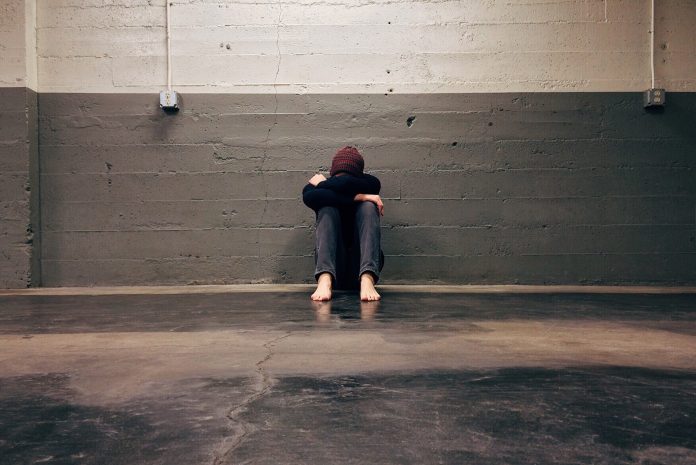 My disposition has much to do with how I view myself, other people, and problems. Parenting forcibly taught me to put on different lenses for viewing the problems and the precious people in my home. One set of lenses I exchanged were the lenses through which I viewed anxiety. Not innately being an anxious person, except as a passenger in a careening car, I struggled to see why it wasn’t easily fixed. Akin to Bob Newhart’s counsel on Saturday Night Live to just, “Stop It,” I struggled to embrace its far reaching effects. Struggled to allow space for it in our home. Struggled to know my role.
My disposition has much to do with how I view myself, other people, and problems. Parenting forcibly taught me to put on different lenses for viewing the problems and the precious people in my home. One set of lenses I exchanged were the lenses through which I viewed anxiety. Not innately being an anxious person, except as a passenger in a careening car, I struggled to see why it wasn’t easily fixed. Akin to Bob Newhart’s counsel on Saturday Night Live to just, “Stop It,” I struggled to embrace its far reaching effects. Struggled to allow space for it in our home. Struggled to know my role.
I distinctly remember when one of my children first expressed the depth of their anxious feelings. I instinctively started reading a book on anxiety, and wanted to learn everything to be able to help. I initiated a 28-day plan to help rewire the brain and think differently. That’d be super helpful for me. It gels with my lens, my personality. If I see a problem, fix it. Don’t stay stuck. However, I wasn’t the holder of the anxiety. I was however, holding the problem of anxiety from my lens and perspective. What I didn’t understand was how vastly anxiousness played out for my child. That the plan I concocted in love was actually adding to the already anxious heart. I felt helpless.
“…40 million American adults, as well as 1 in 8 children, suffer from anxiety. Many kids miss school, social activities and a good night’s rest just from the worried thoughts in their head. Many parents suffer from frustration and a feeling of helplessness when they witness their child in this state day in, day out.” (https://www.huffpost.com/entry/9-things-every-parent-with-an-anxious-child-should-try_b_5651006 )
1.Acceptance 
The first lens I had to change was how I viewed anxiety. The things that stress out my anxious children may or may not be things with which I identify, but they are very real to the my children. I remember reading a Players Tribune article, “The Toughest Call of My Life ” by an NBA player, Jalen Moore, who suffered with anxiety. He described anxiety as an abnormal reaction to a normal situation. For some reason, this article started to change my lens. When I don’t understand the emotions that a seemingly “normal” situation is producing in my child, I remember that NBA player trying to be normal like everyone on the plane, but unable to adjust even with a strong desire. What may be a normal response for me, isn’t for my anxious child. Here’s an excerpt from the article:
“Now my heart was thumping just as loud as the turbulence, like it was gonna punch its way out of my chest. I was sweating, so I had the A/C knob pointed right at my face on full blast. I kept both of my legs braced tight against the seat in front of me, and my hands were locked onto each armrest. I started to talk to myself, to try to calm myself down.The plane was going down. My body was telling me, loud and clear: This is the end. And I was sure everybody else on the plane felt that way, too. But they didn’t… I’d occasionally peek up to the front seats to check on my dad…Each time I looked up at my dad, he was reading his book…like nothing was the matter. How could you be reading at a time like this? All the noise, all the turbulence…and yet most of my teammates seemed calm — some were sleeping, some were talking, some had headphones on. Why wasn’t everyone else freaking out?”
2. Therapy
The second lens exchange was the need for a therapist. I really thought we could handle it  in-house, I really did. As a Christian, I fundamentally believe in the power of prayer and being able to use right thinking and actions to change. At that time I was slow to acknowledge how essential extra outside help was. We hired a cognitive behavioral therapist (CBT) who helped rewrite the messages to replace and renew the mind. According to Psychcentral.com CBT is defined as ,”…a short-term, goal-oriented psychotherapy treatment that takes a hands-on, practical approach to problem-solving. Its goal is to change patterns of thinking or behavior that are behind people’s difficulties, and so change the way they feel.” I searched high and low for someone who shared our child’s faith and this therapy method. It was expensive. It wasn’t covered by insurance. In retrospect, I wonder why I even balked at the cost. It was worth the investment. Getting outside help was a process, and we were very picky. Not just anyone gets to speak into and hear the heart of my children.
in-house, I really did. As a Christian, I fundamentally believe in the power of prayer and being able to use right thinking and actions to change. At that time I was slow to acknowledge how essential extra outside help was. We hired a cognitive behavioral therapist (CBT) who helped rewrite the messages to replace and renew the mind. According to Psychcentral.com CBT is defined as ,”…a short-term, goal-oriented psychotherapy treatment that takes a hands-on, practical approach to problem-solving. Its goal is to change patterns of thinking or behavior that are behind people’s difficulties, and so change the way they feel.” I searched high and low for someone who shared our child’s faith and this therapy method. It was expensive. It wasn’t covered by insurance. In retrospect, I wonder why I even balked at the cost. It was worth the investment. Getting outside help was a process, and we were very picky. Not just anyone gets to speak into and hear the heart of my children.
3. Sleep
The third major lens adjustment for me was respecting and learning to help with sleep rhythms. When I go to bed I am asleep in less than 3 minutes. If I wake up, I immediately go back to sleep. I’ve never suffered from insomnia. But when I look back over the course of my two anxious children’s life, sleep has always escaped them. When they were little, the going to bed process was tedious, long drawn out tuck-ins, a million reasons for delay, waking up at night to creep into our room seeking comfort. I always thought it was just controlling behavior, or they would grow out of it. However, now in their teens, my two anxious children still struggle to fall and stay asleep. They’ve expressed even dreading the very idea of bedtime knowing what stress waits for them in dark of night.
There seems to be something vulnerable about shutting our eyes, trusting in our safety, letting go of control while we sleep. I believe it’s one of God’s ways of showing us our finiteness, our dependency. Practically speaking, what helped was sticking to a routine, a good sheet count, fans, right temperature, and especially sympathy. It’s taken a long time to figure out these rhythms. If I wasn’t home for usual tuck-ins, one child would wake up in the middle of the night, like 2 or 3 a.m. asking me to do our treasure hunt back scratch. My original lens was to view it as control, and I didn’t want to encourage that behavior. Conversely, when I saw it through the compassionate lens of someone who desperately wanted to sleep and routines mattered for peace of mind, I stopped feeling anything except compassion. Now as a teenager when given the option of going to bed later without me doing the tuck in, or going to bed when I can give the full tuck in, this child chooses the tuck in option. What a gift to be able to provide a simple comfort to a mind that is searching for comfort and peace.
Parenting through and dealing with anxiety is complicated, for everyone. It seems to take many forms and manifests itself in unique ways. I do know that these 3 lens adjustments made a world of difference in my home for my children. The anxiousness still lingers and takes various forms, as is the way of life while they grow, mature and experience new stages of life, but for me, the one thing that needs to be constant, although often imperfect, is a compassionate lens for their struggle with anxiety.



















Oh my gosh this is so good! You could be describing a “past me!” I love the view you write this from!